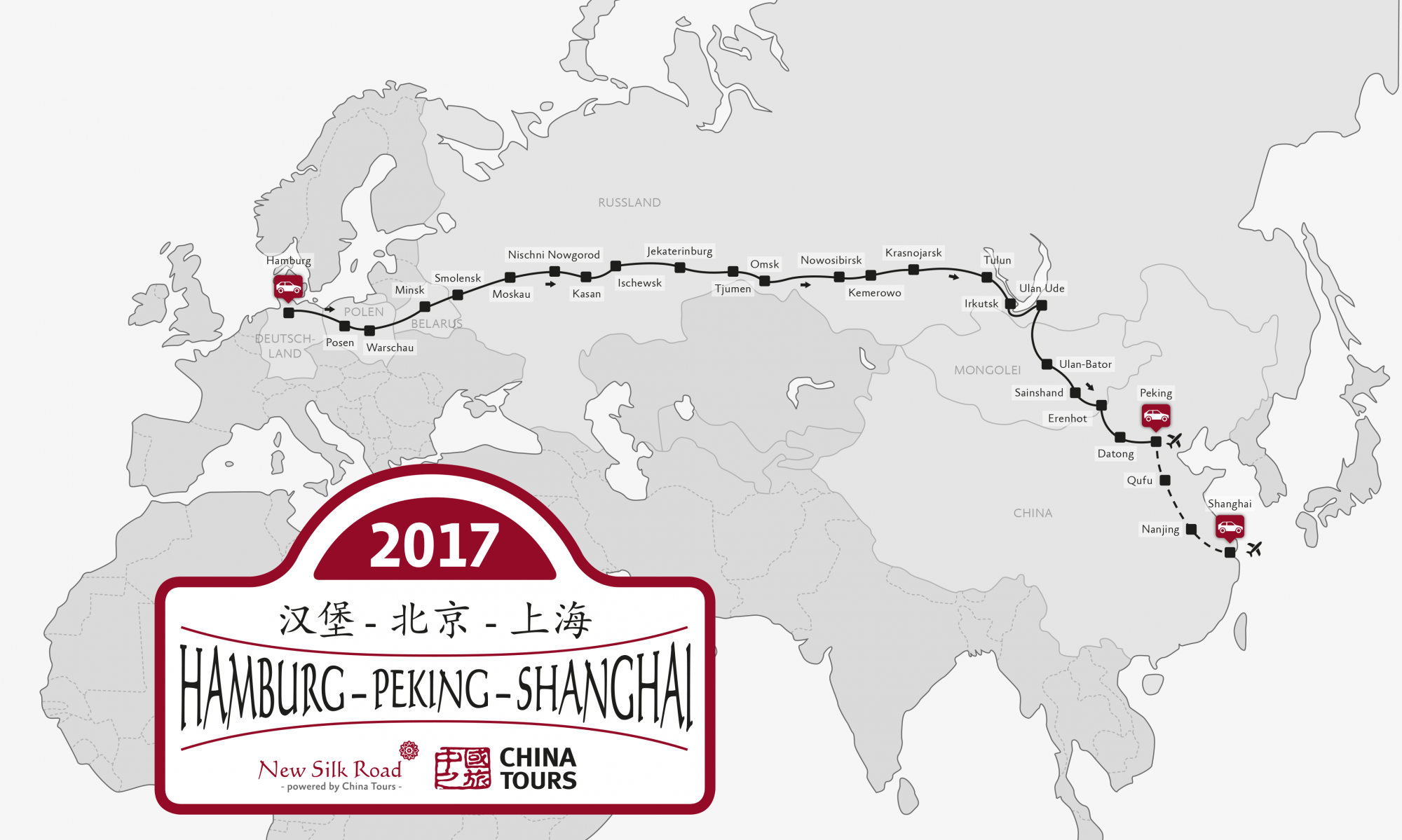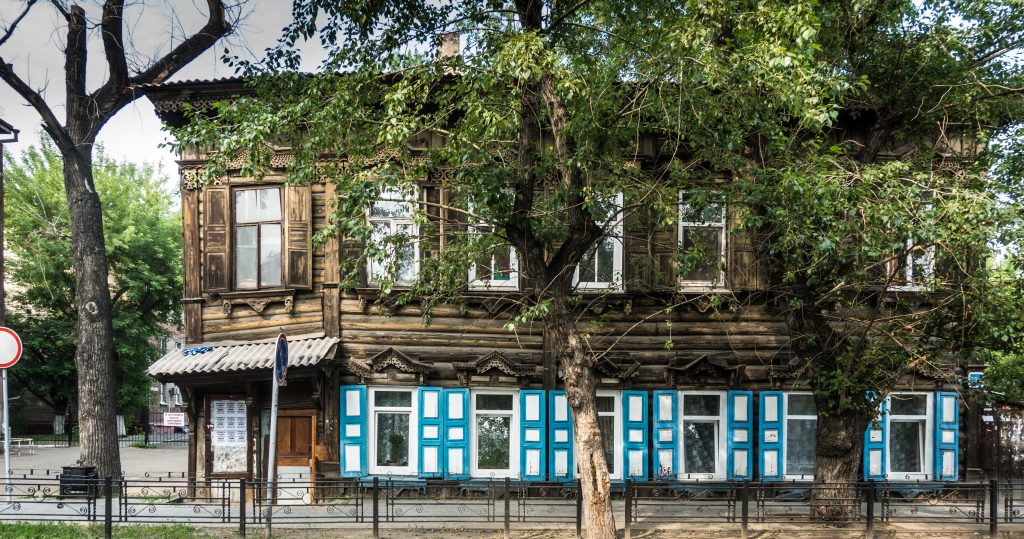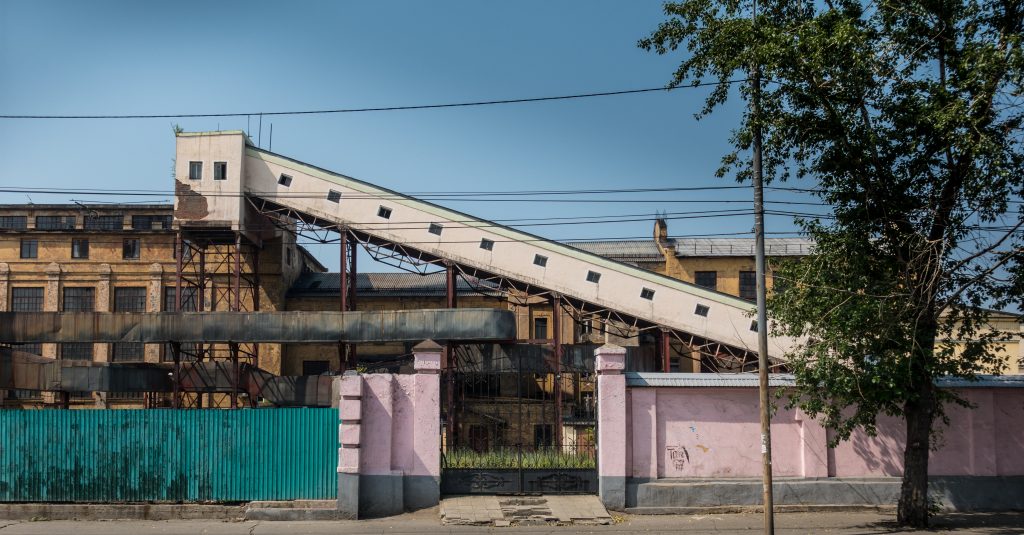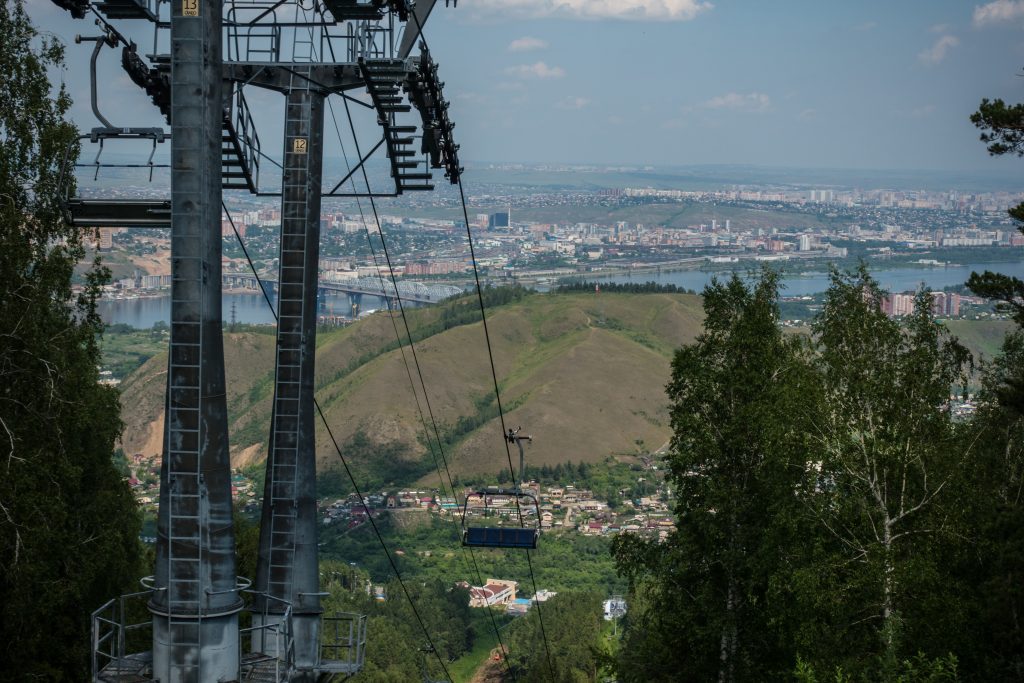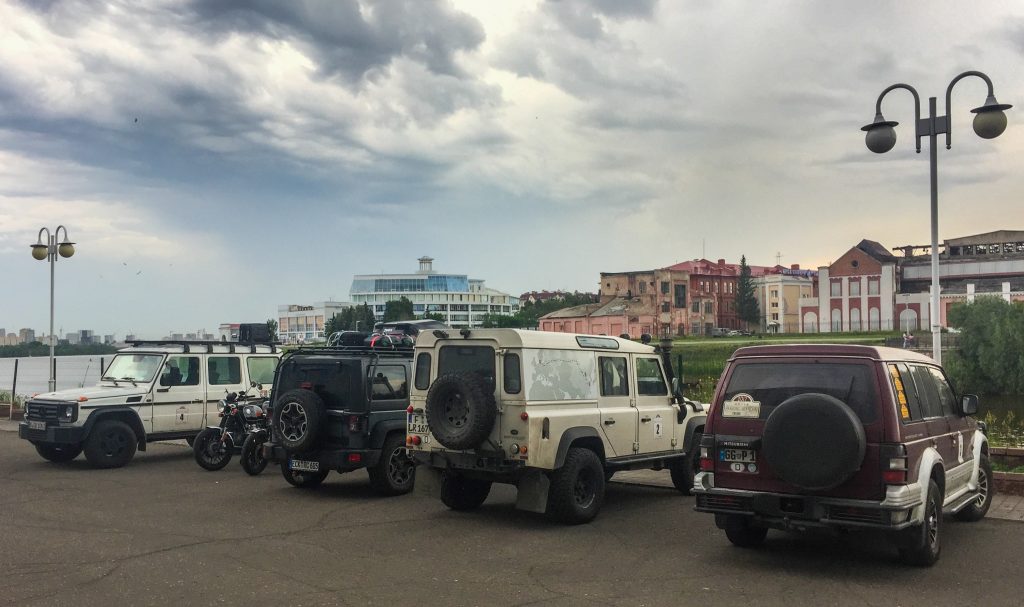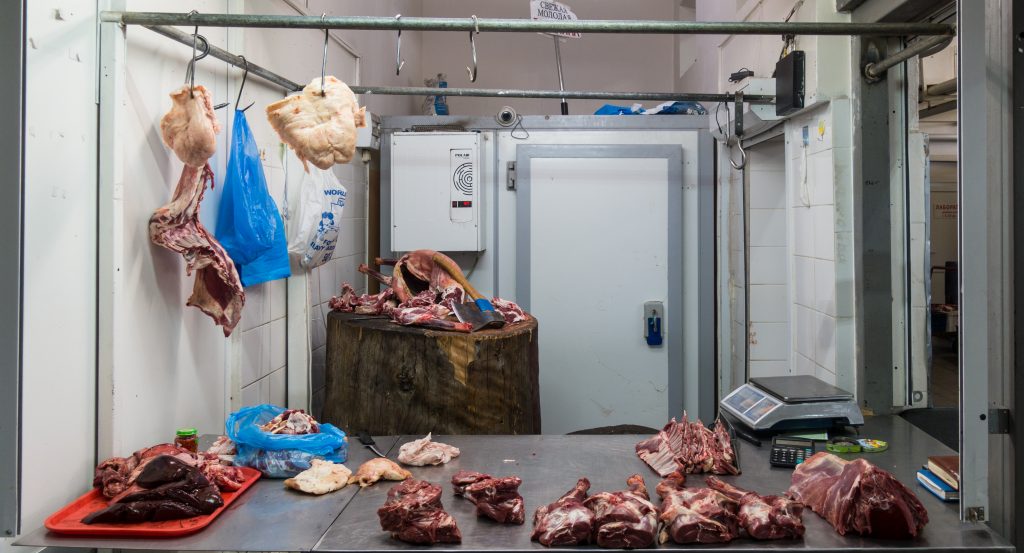
Heute war mal richtig was los! Wir fahren in den Pribaikalskij Nationalpark. Alleine der Eingang liegt etwa 150 Kilometer von Irkutsk entfernt. Und er ist ganz anders, als ich es mir vorgestellt habe. Statt dichter Wälder fahren wir eher durch Prärie, Weideland oder gar Steppe. Kaum ein Baum. Ein ganz klein wenig erinnert es an das Altiplano – natürlich sind wir hier deutlich tiefer.
Kühe, Pferde und Schafe leben hier scheinbar frei – jedenfalls blockieren sie dauernd die Strasse oder okkupieren in Herdenstärke ganze Tankstellen wegen des Sonnenschutzes.
Am Fährableger nach Olchon kommen wir dann das erste Mal direkt mit dem See in Berührung. Eigentlich sieht hier nichts spektakulär aus, aber der See hat es in sich. Für einige in unserer Gruppe ist es ein grosser Sehnsuchtsort, aber auch die Fakten sprechen für sich. Für uns ist es in aller erster Linie mal der dritte von sechs großen Milestones unserer Reise:
- Moskau erreichen – erledigt
- Sibirien/Asien erreichen – erledigt
- Baikal erreichen – erledigt
- Mongolei erreichen – offen
- China erreichen – offen
- Auto im Container abstellen – offen
Der Fähranleger ist sehr verschnarcht. Dass soll in der Hochsaison anders sein, wenn sich Autofahrer darum prügeln, wer auf die nächste Fähre darf.
Dann das Highlight des Tages: Endlich darf ich mal Piste fahren. Und es kommt noch besser: Sandbarrieren sind zu überwinden, es wird steil, riesige Löcher – herrlich. Nichts was die lokalen Champions mit ihrem ollen Fiat-Nachbauten nicht auch schaffen, aber hier kann man mal wenigstens die Untersetzung reinhauen, ohne dass es zu blöd wirkt.
Nachdem wir die Zufahrt zu einer zweiten Bucht geschafft haben, geht es eigentlich wieder den gleichen Weg zurück, aber mich lächelt eine sehr provisorische Spur zwischen Bäumen den Hang hoch an…angeblich ist die als weisse Straße in Karten verzeichnet. Die Hälfte schaffen wir, dann ist selbst im ersten Gang der Untersetzung, mit gesperrtem Mitteldifferential und moderatem Anlauf nichts mehr zu machen, weil der Untergrund an einer Stelle zu sandig ist und ausgerechnet dort auch noch eine derbe Verschränkungspassage lauert. Etwas unangenehm war, dass aufgrund der doch nicht unerheblichen Steigung von 40-60% an dieser Stelle das Fahrzeug nicht mehr komplett kontrollierbar war, sondern ins rutschen kam – zwischen Bäumen will man das nicht und auch aus der Falllinie sollte das Auto nicht geraten.
Den Hang runter im Rückwärtsgang wäre eine Option, aber da hat man noch weniger Kontrolle, also genau auskundschaften, wo man mit erträglicher Schräglage das Fahrzeug wenden kann. Dabei spielt einem die Psychologie böse Streiche, weil sie die Steigung stark übertreibt. Auf dem im Nachhinein analysierten Dashcam-Video kann man an der Baumstellung erkennen, dass es auch in den steilen Stellen sicher nicht mehr als 60% hat und im Schnitt sicher nicht mehr wie 40% – aber gefühlt kippt das Fahrzeug dauernd um, obwohl es bis zu 100% schafft.
Positiv: Die komplette Ladung blieb da wo sie sein soll – inklusive verzurrtem Kühlschrank.
Nach dem Abenteuer geht es dann ohne Schäden und weitere Komplikationen die 260 Kilometer zurück ins Hotel.
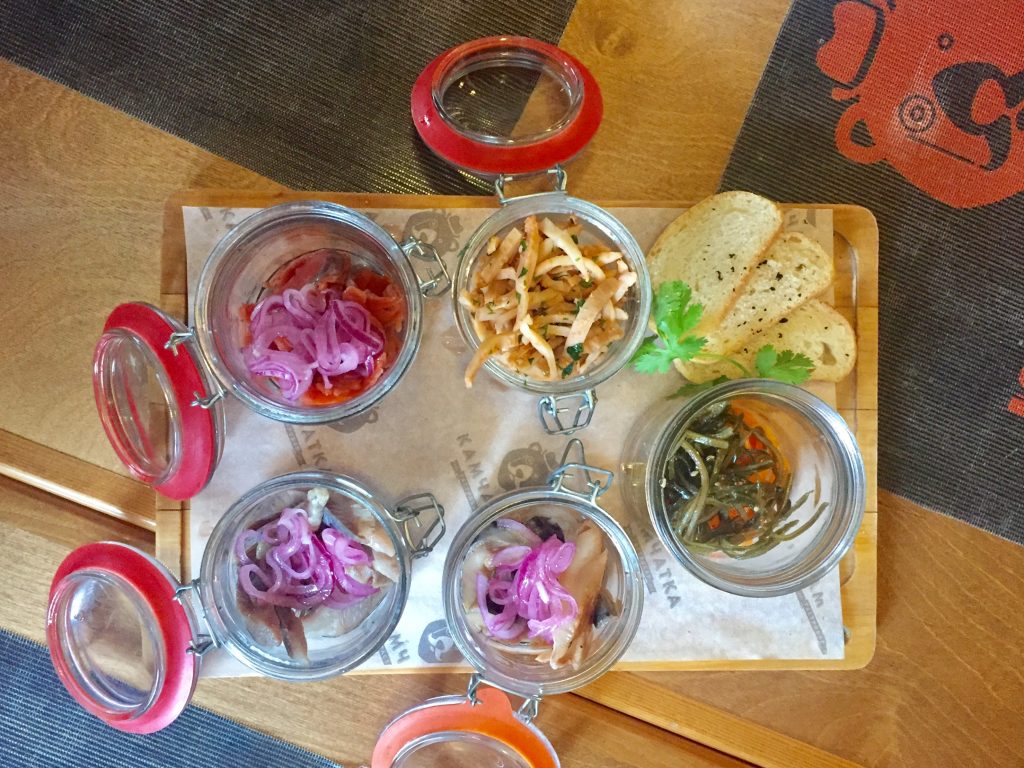
Am Abend gehen wir in ein Restaurant mit Gerichten aus Kamtschatka – jedenfalls in sehr freier Anlehnung. Die gemischten Fischvorspeisen sind toll, u.a. gibt es endlich einmal Omul, der hier in einer eingelegten Variante feiner und fester wie Hering schmeckt. Sehr gut. Bei der Hauptspeise waren wir etwas weniger fixiert. Ich hatte z.B. exzellente Spareribs. Als Wein gab es die üblichen Phantasienamen aus Frankreich und Italien unter denen die Reste gen Osten verkauft werden – hier gar nicht einmal überteuert.

Today was real fun! We visited the Pribaikalsky NP. The entrance is 150 km away from Irkutsk. The landscape is totally different from what I expected. Instead of dense forests it contains more prairie, grassland and steppe. Isolated trees. It reminds me a little bit of the Altiplano – of course we are talking about different altitudes.
Cattle, horses and sheeps seem to live unfenced – at least they blocked the road several times and occupied fuel stations to get a little bit of sun protection.
At the ferry terminal to Olchon we got into contact with the lake for the first time. Nothing looks spectacular, but the lake is a highlight. For some of our group it is somehow a destiny, but also the facts speak for themselves. For us it is mainly the third of six major milestones of our journey:
- Arrival in Moscow – accomplished
- Arrival in Siberia/Asia – accomplished
- Arrival at Baykal- open
- Arrival in Mongolia – open
- Arrival in China – open
- Dump the car into the container – open
The ferry terminal is sleepy. As far as I understood Alla and our travel books this changes during the high saison when car drivers battle for the next ferry.
Then the highlight of the day: I can drive on a dirt road. And it is getting better: Sand barriers, it is getting steep, gigantic potholes – awesome! Nothing the local champions cannot master with their scrappy Fiat-clones, but I can put the car in low gear without to much showing off.
After reaching the second bay, we normally had to go back the same way, but a very rough hill track smiled at me which was marked as a white road in our electronic map. We accomplished half way – even with locked middle differential, first in low gear and with a little bit of a jump start we did not get further up the hill, because the underground was too sandy and the required articulation was to heavy. A little bit unpleasant was the fact that we slipped down the hill each time we failed to cross the passage. I guess the incline was between 40-60% . The vehicle was no more under full control – what you do not really want between a lot of trees and at a steep hill.
Down the hill in reverse was an option, but that would mean very limited control. Instead I tried to find a place where I could turn the car safely. Here comes psychology into play. You overstate the incline massively. When I analyzed the dash cam video later on, I would guess that the incline was 60% at the critical passage and in an average 40% – but you constantly think the car will capsize any second, although it can handle 100%.
Positiv learning: The complete load remained where it belongs – including the lashed fridge.
After this adventure we returned safely to our hotel.
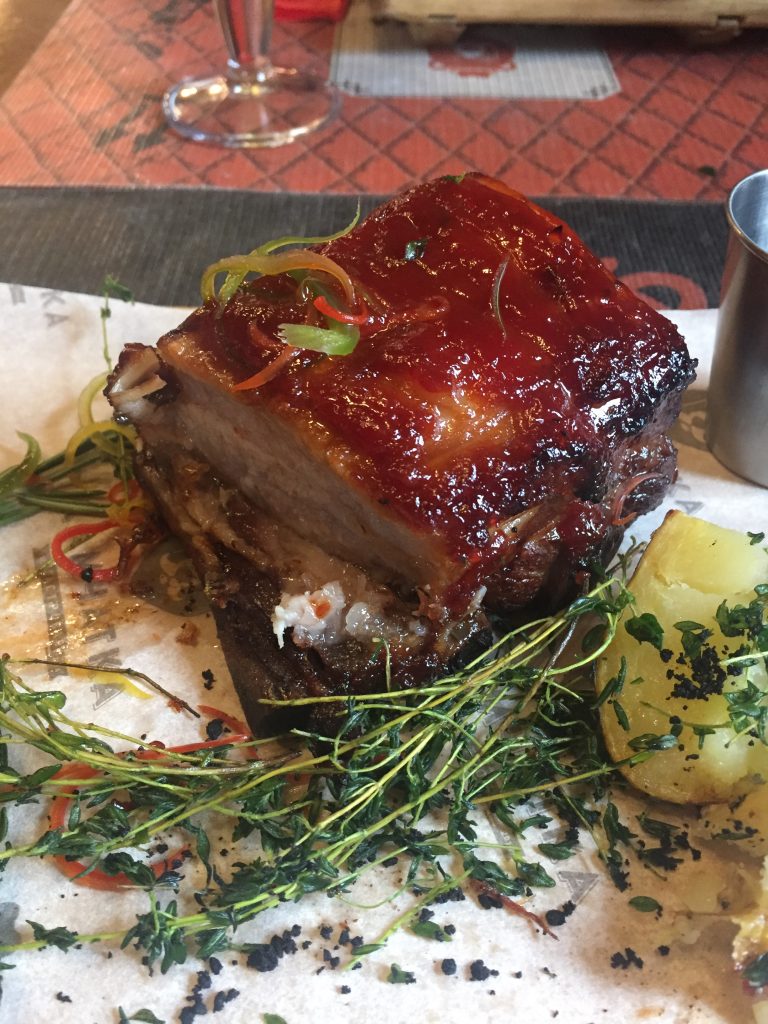
In the evening we had dinner in a restaurant specialized on Kamtchatkan cuisine – at least it was inspired by it. The mixed fish platter was a great starter. Finally we had the chance to taste Omul, which was marinated and tasted delicately. Very good. The main courses were a little bit more generic, nevertheless my spare ribs were excellent. As a wine we had one of this here common french (and italian) phantasy chateaus which are utilized to sell average wines (in the best case) to the far east.
